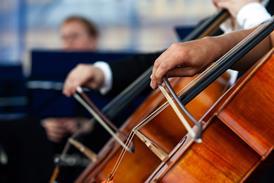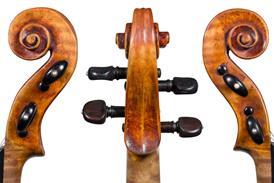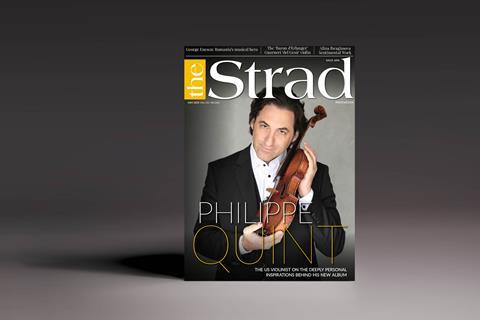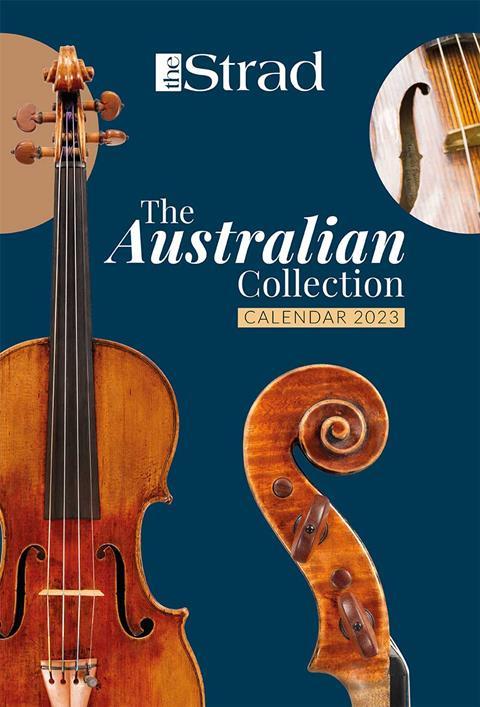From equipment to microphone placement, Donna Maurer provides simple tips for getting the best results from a home studio

Discover more Featured Stories like this in The Strad Playing Hub
The violin and other stringed instruments can be challenging to record. There’s nothing like a live symphony sound, and usually, the venue where the instruments are played aids in helping to support the overall quality. Capturing that same essence and sound can be difficult in a studio or home studio-type setting.
Professionals in the industry, even sound engineers in the studio, know that there’s no real solution for the ability to produce a pure acoustic sound. The recording just has to work to find a sound that’s close or that suits the instrument best.
So, how can you work in the studio to produce and record the timeless sound of the violin? Here are some ways to bring out the best quality from the instrument when recording.
Creating the sound
Many expert string players and violinists connect deeply with their instruments, so the bond is unbreakable. But, understandably, the instrument will sound different in a venue with fantastic acoustics than in a closed, soundproof studio.
One of the biggest challenges is developing a way to amplify the sound without adding too many effects. It can distort the sound of the strings when you play it too much. There’s a balance when editing audio to figure out how to make sounds better, like how to use the microphone correctly, whether amplifiers are necessary, and whether you can plug into a bigger system that will provide you with those effects without having to add them post-production.
The equipment
Your equipment is another factor that will matter in the studio. Microphones have an innate ability to pick up the violin’s sound in a more pure form, so investing in a good microphone can enhance the overall sound quality you’re looking to achieve.
The instrument can create a unique sound that’s hard to replicate, so your ears will be vital in identifying how to re-create it in studio production. Amplifiers can be helpful depending on your setup, and you should take many takes and experiment with different equipment to see where the sound is most well preserved.
Steps for recording the violin
Setting up the microphone will be a bit challenging because you don’t want to get too close to the instrument, making it sound shrill. But, if you’re too far away from the instrument, you run the risk of outside sounds or room tones as the sound bounces off walls and objects.
Here are some helpful tips to follow when you set up the studio to record the violin:
-
Start with the microphone at one foot to three feet from the instrument.
-
Point it toward where the bow goes across the strings, positioning it upward and outward from the instrument.
-
A large diaphragm condenser microphone tends to register the best sound with a violin, so consider investing in one (if you don’t have one in the studio already).
-
Consider taking the player out of the recording booth and having the violinist play in a common room or a place with a more noticeable reverb (echo).
The room for recording violinists
Tiny rooms like small recording booths or closets are not ideal for violin recording. The instrument needs more space for the sound to be good, and the player also needs room to move the bow more freely.
It’s not advisable to record in a concert hall or performance space. If that is the only option, there are specific techniques for recording and where to place microphones, speakers, and amplifiers. You’re better off finding a decent-sized room in your home or studio area.
Read: 6 tips for empowered recording: Susanna Klein
Read: Fiddling with Ownership: The importance of owning your violin music rights
Read: The Art of Vibrato: Techniques and Tips for Violinists
Microphone Types for Violin Recording
Condenser microphones generally sound the best for violins because they have an excellent frequency and transient response than any other type. It picks up a wide range of high and low frequencies, resonances, and overtones.
Some condenser microphones have an adjustable polar pattern, the area around the microphone that picks up sound. You can pick it up more omnidirectional (all-around) at 360 degrees, more cardioid or toward the front of the mic, or bi-directional, which is more behind and a little on the sides of the microphone.
Ribbon microphones can also be excellent for violin recording. They can, however, taper off at a high-end frequency.
Where to place your microphones for a timeless sound
Placing your microphone also matters in this case because if it is well-placed, the recording will pick up the best sound from the violin. That’s why you should experiment with distance, from one to three feet from the instrument, and point toward the bow area.
If you hear that strings don’t sound balanced, check to be sure your violinist isn’t moving too much while playing. If this is the case, you may need to do some editing in post-production to balance out the sound.
Harsher noises from the bow, where you hear more squeaks or strokes, could indicate your microphone is too close. If you can’t minimise these during recording, you should explore the EQ plugin during your sound editing to adjust the frequencies and mellow things to sound more even.
Recording the best violin sound
If the microphone placement doesn’t sound good when you listen, try listening to the player instead of how it sounds through the microphone. Have the player give you feedback by hearing and determining where to place the microphone best. You may have to move it multiple times to get the right sound physically.
If you use more than one microphone, you should experiment with your mix during sound editing and adjust levels between the two for an exceptional balance. A couple of good plugins to have with your audio software include reverb, EQ, and compression. If your studio is in your home, consider what room has good space and will help enhance the overall sound quality of the instrument.
It will take time to catch that timeless sound from your violin recording. Be patient, take multiple recordings of the same song, and work in your post-production sound editing to nail that ’sweet spot’ where the violinist transports you.
Read: Pickup or microphone? Choosing what’s right for your bowed string instrument
Read: Accessories 2021: Teaching Online – Amplified Learning
Read: Products July 2021: Microphone
Read more Featured Stories like this in The Strad Playing Hub
The number one source for playing and teaching books, guides, CDs, calendars and back issues of the magazine.
In The Best of Technique you’ll discover the top playing tips of the world’s leading string players and teachers. It’s packed full of exercises for students, plus examples from the standard repertoire to show you how to integrate the technique into your playing.
The Strad’s Masterclass series brings together the finest string players with some of the greatest string works ever written. Always one of our most popular sections, Masterclass has been an invaluable aid to aspiring soloists, chamber musicians and string teachers since the 1990s.
This year’s calendar celebrates the top instruments played by members of the Australian Chamber Orchestra, Melbourne Symphony, Australian String Quartet and some of the country’s greatest soloists.





































No comments yet